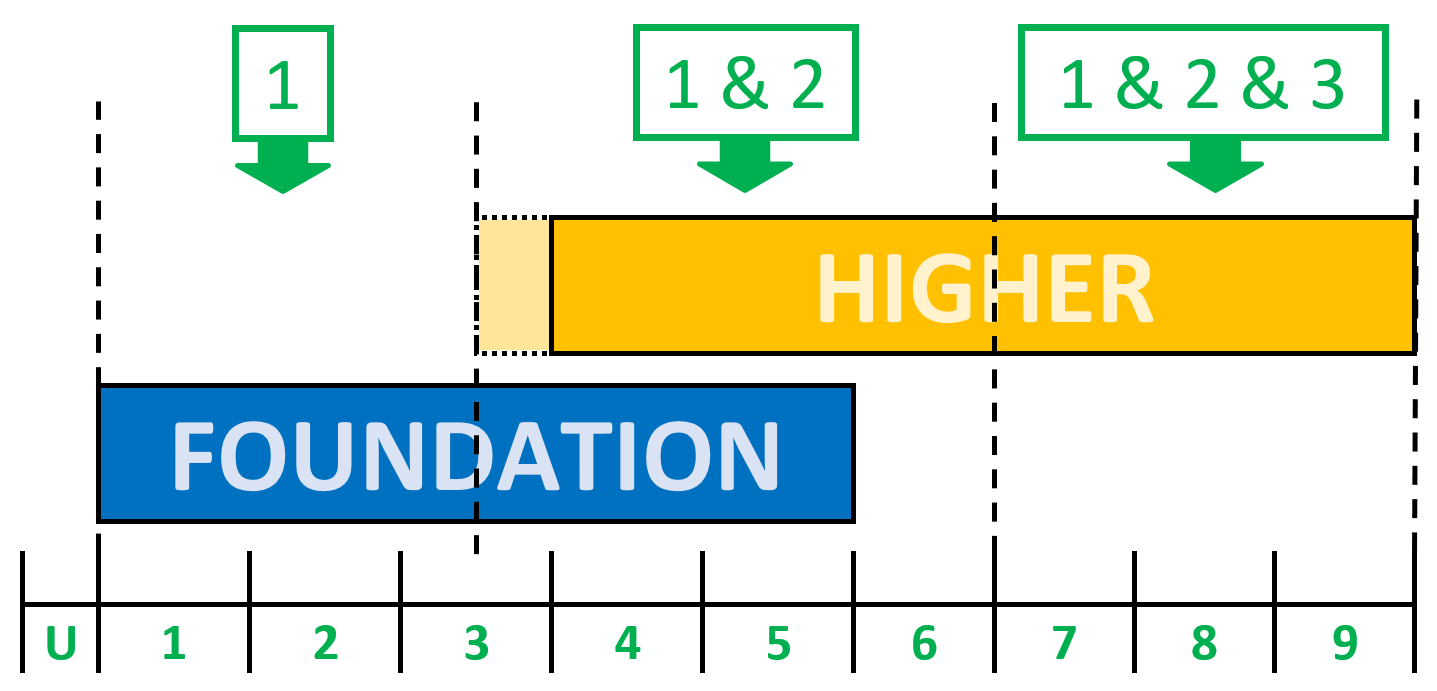GCSE (9-1) Maths - how to use the specification to prepare for teaching in 2020-21
23 June 2020
Hints and tips - 5 minute read
 Neil Ogden, OCR Maths Subject Advisor
Neil Ogden, OCR Maths Subject Advisor
In this blog I will look at how the layout of content in our GCSE (9-1) Mathematics specification can really help teachers to focus their schemes of work to suit students’ ability.
The layout of the content within our specification has received lots of positive feedback. For Year 10 students whose GCSE education has been disrupted, its layout will really enable teachers to make the most of the remaining teaching time.
Unlike many other qualifications, the OCR GCSE (9-1) Mathematics specification doesn’t just present the content in lists of statements broken down into Foundation and Higher tier. Instead, it breaks it down in a table over three distinct levels of content that progress through the qualification.
- Column 1 – ‘Initial learning for this qualification will enable learners to…’
- Column 2 – ‘Foundation tier learners should also be able to…’
- Column 3 – ‘Higher tier learners should additionally be able to…’

The content for Foundation tier students is in column 1 and column 2.
The content for Higher tier students is in column 1, column 2 and column 3.
Importantly, the proportion of content from each column that will be assessed in the question papers will differ.
On Foundation tier question papers:
- The lowest demand 50 marks (assessing Grade 1 – lower Grade 3) will feature content from just column 1.
- The remaining 50 marks (assessing upper Grade 3 – Grade 5) will feature content from both column 1 and column 2.
On Higher tier question papers:
- The lowest demand 50 marks (assessing Grade 4 – Grade 6) will feature content from column 1 and column 2.
- The remaining 50 marks (assessing Grade 7 – Grade 9) will feature content from column 1, column 2 and column 3.

How you can use the specification to focus schemes of work
For Foundation tier students, secure knowledge of the content from column 1 of the specification is particularly key, as this is content that will make up more than half of the papers they sit and crucially it also supports their learning of content from column 2.
- Foundation tier students working at the level of Grade 1 to lower Grade 3 will benefit from a scheme of work that focusses their learning on column 1 content, bringing in column 2 content as the students are suitably equipped for it.
- Foundation tier students working at the level of upper Grade 3 to Grade 5 will benefit from a scheme of work that secures their knowledge of content from column 1, while increasingly extending their time with the column 2 content.
For Higher tier students, content from columns 1 and 2 will make up more than half of the papers they sit, as well as often crucially supporting their understanding of content from column 3.
- Higher tier students working at the level of Grade 4 to Grade 6 will probably benefit from a scheme of work that focusses their learning on column 1 and column 2 content, bringing in column 3 content as the students are ready for it.
- Higher tier students working at the level of Grade 7 to Grade 9 will benefit from a scheme of work that secures their knowledge of content from column 1 and column 2, while increasingly extending time with the column 3 content.
In this way, the layout of the specification can be used to focus 2020-21 schemes of work to dedicate the time that remains to content that’ll best enable students to succeed. Centres have told us it’s one of the advantages of OCR’s GCSE (9-1) Mathematics that has been part of them making the move to the qualification and we hope many centres will be able to benefit from it in the future exam series.
Stay connected
Are there any maths topics you think are going to be particularly affected by the loss of teaching time in 2020? Let us know via the comments below, or you can email us at maths@ocr.org.uk, call us on 01223 553998 or Tweet us @OCR_Maths. You can also sign up for email updates to receive information about resources and support.
About the author
Neil Ogden, OCR Maths Subject Advisor
Neil has worked in a variety of qualification lead roles at OCR for a number of years, having joined the Maths team in 2012. Neil led the development of the new GCSE (9-1) maths qualification (J560) and following its accreditation, most of his time is spent supporting teachers delivering the qualification.
Neil also supports a range of OCR maths qualifications, as well as regularly publishing to the OCR maths Twitter account.